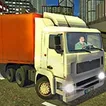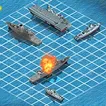























Mastering Minesweeper: Strategies, Evolution, and Online Play
Embarking on a journey through the pixelated minefields of Minesweeper is not just a nostalgic trip down memory lane; it’s a strategic endeavor that sharpens the mind. The game’s enduring appeal lies in its simplicity and depth, offering a quick diversion for some and a serious challenge for others. Minesweeper requires players to deduce the location of mines using numerical clues, a test of logic that has remained captivating since its inception.
With the advent of online gaming, Minesweeper has found a new lease of life. Players can now engage with the game across various platforms, often for free, and without the need for installation. This accessibility has opened the door to a wider audience, allowing both beginners and experts to hone their skills in a digital arena. The transition to online play has not diluted the game’s essence; instead, it has enriched the experience with features like leaderboards and social sharing, adding a competitive edge to the solitary pursuit.
The game’s evolution from a pre-installed Windows distraction to a web-based phenomenon demonstrates its adaptability and the players’ desire for intellectual stimulation. Online Minesweeper retains the core mechanics that fans love while presenting them in new and engaging ways. Whether you’re a seasoned pro seeking to refine your strategy or a newcomer eager to learn the ropes, the online world of Minesweeper offers an endless array of possibilities to explore, learn, and master this timeless game.
Play Minesweeper Online: Enhance Your Skills and Strategy
As the digital landscape expands, so does the realm of Minesweeper, transitioning seamlessly from the desktop to the online world. Playing Minesweeper online is not only convenient but also a robust way to sharpen your strategic thinking and quick decision-making skills. The game’s premise remains unchanged: clear a grid of squares without detonating hidden mines, using numerical clues to deduce safe paths. However, the online experience enhances this with features like varying difficulty levels, timed challenges, and the opportunity to compete against players worldwide.
For those looking to improve their gameplay, the key is to start with the basics. Understand the patterns and use logic to navigate the grid efficiently. Practice makes perfect, and online platforms offer endless opportunities to do just that, without the risk of running out of puzzles. As you grow more confident, employ advanced tactics such as the 1-2-1 and 1-2-2-1 patterns to swiftly identify mine placements.
Online Minesweeper also allows players to track their progress over time. With each game, you can strive to beat your personal best, adding a layer of motivation to the mix. The instant feedback provided by online versions can be instrumental in refining your approach to the game.
Moreover, the social aspect of playing Minesweeper online cannot be overstated. Sharing your triumphs, exchanging tips with fellow enthusiasts, and even watching others play can provide fresh perspectives and strategies that you might not have considered.
In summary, playing Minesweeper online is an enriching experience that combines the classic appeal of the game with modern conveniences and community engagement. Whether you’re looking to kill time or engage in serious mental gymnastics, the online Minesweeper landscape is a fertile ground for both skill enhancement and strategic mastery.
The Evolution of Minesweeper: A Windows Game Transformed
Minesweeper’s transformation from a simple Windows game to a multifaceted online experience is a testament to its timeless design and the ever-changing landscape of digital entertainment. Initially bundled with Microsoft’s operating system to teach mouse fluency, it quickly became a staple of PC gaming. The game’s premise, which requires players to clear a minefield with the help of numerical clues, has remained largely unchanged, yet its presentation and reach have evolved dramatically.
The shift from a local, solitary experience to an online, community-driven one has been significant. The digital age has allowed Minesweeper to break free from the confines of its original platform, offering a more accessible and varied experience to a global audience. The essence of the game has been preserved, but the way people interact with it has been revolutionized. Online versions maintain the core mechanics while introducing new features such as different grid sizes, themes, and even multiplayer options, catering to a diverse range of preferences and skill levels.
This evolution has not only kept the game relevant but has also expanded its fan base. Minesweeper’s simplicity makes it easy for new players to pick up, while its depth provides a rich playground for veterans to continue developing their strategies. The game’s ability to adapt to the changing times while maintaining its core challenge is a key factor in its enduring popularity.
In embracing the internet, Minesweeper has also embraced a new era of gaming, one that values connectivity and competition. The game that once served as a casual pastime has grown into a platform for players to challenge themselves and others, proving that even the most straightforward of games can have a profound and lasting impact.
Minesweeper’s Legacy: Cultural Impact and Competitive Play
Minesweeper’s influence extends far beyond its simple interface and gameplay mechanics; it has ingrained itself into the cultural fabric of gaming, becoming an icon of logic-based entertainment. Its legacy is one of mental acuity, where players are celebrated for their problem-solving skills and strategic foresight. The game’s impact is seen in the community that has blossomed around it—forums and online groups dedicated to Minesweeper are a testament to its ability to bring people together, sharing strategies, and challenging each other’s high scores.
The competitive aspect of Minesweeper should not be underestimated. It has fostered an environment where players vie for the fastest completion times, turning what was once a solitary activity into a competitive sport. Online leaderboards and tournaments have elevated the game to a new level, with enthusiasts from around the world competing to be recognized as the quickest and most efficient minesweepers. This competitive play adds a thrilling dimension to the game, pushing players to refine their techniques and reaction times in pursuit of victory.
Minesweeper’s enduring presence is also a reflection of its educational value. It teaches patience, logical reasoning, and the ability to make decisions under pressure—skills that are valuable in many real-world scenarios. The game’s simple concept belies the depth of critical thinking it requires, making it a powerful tool for cognitive development.
In summary, Minesweeper’s legacy is multifaceted, encompassing cultural significance, community building, and competitive play. It has evolved from a basic computer game into a symbol of intellectual challenge, demonstrating that a game need not be complex to leave a lasting mark on the world of gaming.







